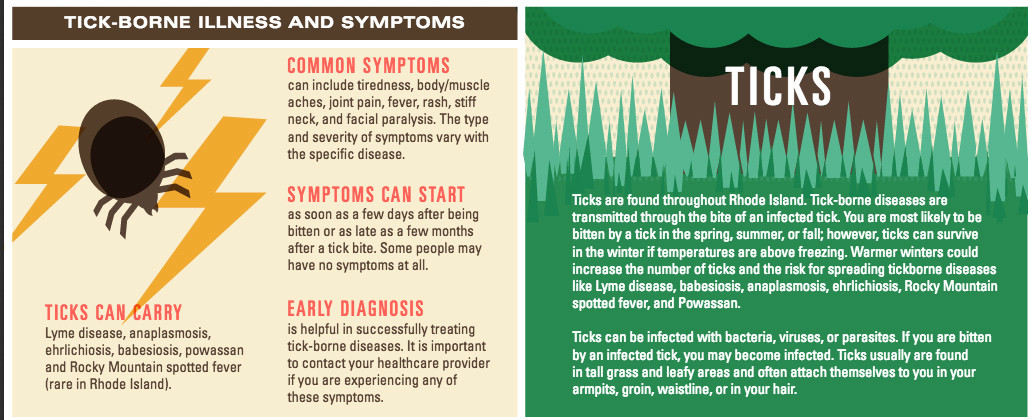Ticks just keep getting easier to find
The rapid increase in Lyme disease in Rhode Island is just one more consequence of man-made climate change
PROVIDENCE – Summertime, as the song goes, and the living is easy, fish are jumping, and the number of ticks keeps getting higher. And higher.
[For those that claim that climate change is a hoax, have them spend an afternoon walking unprotected through a nearby field with their dogs and see how many ticks end up attached to them and their dogs’ bodies.]
And, with the increased number of ticks, comes the increased prevalence of Lyme disease.
Between 2016 and 2017, Rhode Island saw a 22 percent increase in the number of cases of Lyme disease reported by health care providers to the R.I. Department of Health, with 927 cases in 2016, versus 1,132 cases in 2017. Rhode Island has the fourth highest rate of Lyme disease in the nation, according to the agency.
In response, the R.I. Department of Health and the R.I. Department of Environmental Management have launched a preventive public information campaign with the messaging: repel, check and remove.
Lyme disease is caused by a bacterium transmitted to humans through the bite of an infected tick, according to the R.I. Department of Health materials. An infected tick usually needs to be attached to a person for at least 24 hours to transmit Lyme disease, the agency said.
The ticks that carry Lyme disease can be found in parks, playgrounds, and backyards, but they are most common in very grassy areas and the woods, the agency continued, warning that ticks can be as small as a poppy seed.
“Climate change – with its elevated temperatures and increased precipitation patterns – could make conditions more hospitable for ticks in the Northeast,” said Department of Environmental Management Director Janet Coit in a news release as part of the public information campaign.
Coit stressed that public education was important, because Rhode Islanders needed to know how to avoid contact with ticks, how to check their body and remove any ticks that are found, and the common symptoms of tick-borne diseases.
Common-sense protections
Among the common-sense protections are to wear light colored clothing, including long pants and long sleeves, when walking in the woods. And, to tuck the pant legs into your socks.
The agencies also recommend taking a shower as soon as you come inside if you have been in a grassy or wooded area, doing a full-body check using a mirror, paying special attention to the areas in and around the ears, behind the knees, around the waist, and in the hair – and to be vigilant in checking your pets for ticks, too.
Tick removal is recommended to be done with tweezers, pulling them straight out. [Two things that ConvergenceRI recommends from the experience of frequent removal of ticks from two dogs over 25 years:
• Be careful handling the tick, which can be adept at scurrying away after removal, and may be engorged with blood. Use tweezers. Place the removed tick on a piece of aluminum foil, and then incinerate the tick with a match, before disposing of it.
• Use hydrogen peroxide to clean out the bite, on your pets or on your children or yourself.
Other observations
Among the animal vectors for ticks are deer, and white-footed mice, which often provide the first blood meals for black-legged ticks, also known as deer ticks.
In turn, in the battle against ticks and Lyme disease, opossum are a friendly warrior. Opossum feed on ticks, killing and eating some 5,000 ticks in a single season, according to researchers, related to their fastidious grooming practices.
The decline of moose in northern New England has been linked to the growing infestation of ticks caused by shorter winters and climate change.






